
Journal of the Serbian Society for Computational Mechanics
Scope & Guideline
Bridging Theory and Application in Mechanics
Introduction
Aims and Scopes
- Computational Fluid Dynamics (CFD):
Research involving the simulation of fluid flow, heat transfer, and related phenomena using computational models to solve complex engineering problems. - Biomechanics and Medical Applications:
Studies focusing on the mechanical behavior of biological systems, including cardiovascular simulations, prosthetics design, and tissue mechanics. - Material Behavior and Mechanics:
Investigations into the mechanical properties of various materials, including composites, polymers, and nanomaterials, often utilizing finite element analysis (FEA) and other numerical methods. - Risk and Reliability Analysis:
Research that addresses risk assessment, reliability, and performance evaluation of engineering systems, particularly in the context of real-world applications. - Multiphysics Simulations:
Interdisciplinary studies that integrate multiple physical phenomena, such as fluid-structure interactions and thermoelectric effects, using advanced computational techniques.
Trending and Emerging
- COVID-19 Impact Assessments:
Papers addressing the implications of the COVID-19 pandemic on project management, risks, and engineering practices have emerged, showcasing the journal's responsiveness to global challenges. - Advanced Numerical Techniques:
An increase in the application of sophisticated numerical methods, such as machine learning and advanced computational fluid dynamics, indicates a trend towards leveraging technology for solving complex engineering problems. - Sustainable and Green Engineering Solutions:
Research focusing on energy efficiency, renewable energy systems, and eco-friendly materials is on the rise, reflecting a broader societal push towards sustainability in engineering. - Interdisciplinary Applications:
There is a growing trend towards interdisciplinary research that combines computational mechanics with fields such as bioengineering, environmental science, and nanotechnology, demonstrating the journal's commitment to innovation.
Declining or Waning
- Experimental Methods in Mechanics:
There appears to be a decrease in the number of papers focusing on experimental methodologies, possibly due to a growing reliance on computational simulations over physical experimentation. - Traditional Structural Analysis:
The prominence of studies solely dedicated to traditional structural analysis methods has waned, as newer approaches and hybrid methodologies gain traction. - Basic Heat Transfer Studies:
Basic studies on heat transfer, without the integration of advanced computational techniques or complex scenarios, have seen reduced publication frequency. - Classical Material Science:
Research centered on classical material science topics, such as simple mechanical testing and characterization, is less frequently represented, indicating a shift toward more applied and complex material behavior studies.
Similar Journals

Izvestiya of Saratov University Mathematics Mechanics Informatics
Driving Progress in Computational Mechanics and EngineeringIzvestiya of Saratov University Mathematics Mechanics Informatics is a prominent open access journal published by Saratov State University, focusing on the interdisciplinary fields of mathematics, mechanics, and computer science. Established as an accessible platform for researchers since 2007, this journal fosters the dissemination of innovative research and advancements in computational mechanics, general mathematics, and mechanical engineering among others. Although currently categorized within the Q4 quartile rankings in various domains, including Computational Mechanics and Mechanics of Materials, it serves as a crucial resource for professionals and scholars aiming to explore emerging trends and methodologies. Operating out of Saratov, Russian Federation, this journal not only contributes to local academic discourse but also holds international relevance, welcoming submissions that push the boundaries of traditional research. Researchers, professionals, and students alike are encouraged to engage with the wealth of knowledge presented within its pages, reinforcing the journal’s role as a vital component in the ongoing development of these scientific fields.
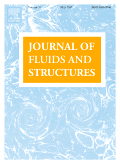
JOURNAL OF FLUIDS AND STRUCTURES
Exploring the Dynamics Between Fluids and StructuresJournal of Fluids and Structures, published by Academic Press Ltd - Elsevier Science Ltd, is a premier international journal dedicated to the interdisciplinary field of fluid-structure interactions. With an impressive impact factor and ranking in the Q1 category for Mechanical Engineering and a Scopus ranking of #119 out of 672, this journal serves as a vital resource for researchers, professionals, and students alike. Since its inception in 1987, it has consistently delivered cutting-edge research and comprehensive reviews that contribute significantly to the understanding of fluid dynamics and structural mechanics. The journal emphasizes innovative methodologies and advances in the analysis of complex interactions between fluids and structures, making it essential for those at the forefront of engineering and applied physics. Additionally, with converged years from 1987 to 2024, the journal has maintained a commitment to fostering academic discourse and presenting groundbreaking research that shapes the future of the field.

PERIODICA POLYTECHNICA-MECHANICAL ENGINEERING
Advancing Mechanical Engineering Through Open InnovationPERIODICA POLYTECHNICA-MECHANICAL ENGINEERING, published by the Budapest University of Technology and Economics, is a distinguished open access journal that has been committed to advancing the field of mechanical engineering since its inception in 1969. With an E-ISSN of 1587-379X, this journal makes a significant contribution to the dissemination of cutting-edge research, currently holding a Q3 ranking in the prestigious Scopus category for Mechanical Engineering. Offering a platform for researchers to share innovative findings and methodologies, PERIODICA POLYTECHNICA serves as a vital resource for professionals, scholars, and students looking to stay abreast of the latest developments in mechanical engineering. With an open access format established since 1999, it ensures high accessibility to valuable knowledge, enabling a global audience to engage with pioneering studies while enhancing collaboration and knowledge-sharing within the field.
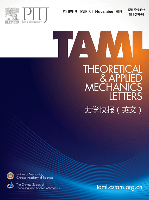
Theoretical and Applied Mechanics Letters
Pioneering Research in Mechanics for Global ImpactTheoretical and Applied Mechanics Letters, published by ELSEVIER, stands as a premier journal in the field of engineering and applied mechanics, recognized for its rigorous peer-reviewed articles that advance theoretical and practical frameworks. With an impressive open access policy established in 2015, the journal enhances global accessibility to cutting-edge research across a range of disciplines including Aerospace, Civil, Mechanical, and Biomedical Engineering, along with Computational Mechanics and Ocean Engineering. The journal boasts an enviable position in the academic landscape, achieving a Q1 rank in several categories as of 2023, while being cited among the top percentiles in Scopus Ranks, specifically ranking #25 in Aerospace Engineering and #15 in Computational Mechanics. The journal aims to foster innovation by providing a platform for scholars and professionals to disseminate their findings, thereby bridging the gap between theoretical research and practical applications. By promoting a diverse range of topics and methodologies, Theoretical and Applied Mechanics Letters not only contributes to the advancement of engineering disciplines but also supports the global academic community in exploring sustainable and impactful engineering solutions.
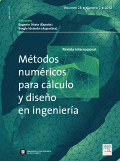
Revista Internacional de Metodos Numericos para Calculo y Diseno en Ingenieria
Pioneering Research for Tomorrow's Engineering ChallengesRevista Internacional de Metodos Numericos para Calculo y Diseno en Ingenieria is a prominent academic journal dedicated to the dissemination of innovative research and methodologies in the fields of applied mathematics and engineering. Published by SCIPEDIA S L in Spain, this journal has been an essential resource for researchers since its inception in 1987, transitioning to an Open Access model in 2016 to enhance accessibility and foster collaboration among professionals and academics globally. Currently indexed in Scopus, it holds a Q4 category designation in both applied mathematics and miscellaneous engineering fields for 2023, reflecting its focus on advancing numerical methods to solve engineering problems. Despite ranking at the lower percentile, it serves as a vital platform for emerging scholars and practitioners aiming to contribute to cutting-edge developments in numerical techniques and engineering design. The journal's commitment to providing a forum for new ideas makes it an invaluable asset for students, researchers, and industry professionals seeking to stay abreast of advancements in the discipline.

Journal of Computational Applied Mechanics
Exploring New Dimensions in Mechanical EngineeringJournal of Computational Applied Mechanics, published by UNIV TEHRAN, DANISHGAH-I TIHRAN, is an influential open-access journal that has been disseminating significant research findings since its inception in 2012. With a dedicated focus on the fields of Computational Mechanics, Mechanical Engineering, and Mechanics of Materials, this journal has garnered a Q3 ranking in multiple relevant categories as of 2023, indicating its burgeoning impact within the academic community. Although precise HIndex scores are currently unavailable, the journal's recognition is underscored by its Scopus rankings, placing it in the middle tier among its peers. The journal invites researchers, professionals, and students to contribute to and engage with the continually evolving discourse in applied mechanics, fostering innovation through the dissemination of quality research. As an open-access journal, it ensures that findings are readily accessible to a global audience, thereby enhancing collaboration and knowledge sharing in the scientific community.

International Journal of Advances in Engineering Sciences and Applied Mathematics
Exploring New Horizons in Applied MathematicsInternational Journal of Advances in Engineering Sciences and Applied Mathematics, published by SPRINGER INDIA, is a distinguished journal dedicated to advancing research in the fields of engineering sciences and applied mathematics. With a focus on innovative methodologies and applications, the journal provides a platform for researchers, professionals, and students to disseminate their findings and explore new frontiers in engineering and mathematical sciences. The journal seeks to publish high-quality, peer-reviewed articles that address contemporary challenges and promote interdisciplinary collaboration. While currently not an open-access publication, it remains a significant resource for those in academia and industry, fostering a deeper understanding of complex engineering problems through rigorous mathematical frameworks. The journal’s ISSN is 0975-0770, with an E-ISSN of 0975-5616, ensuring a broad dissemination of knowledge in the scientific community.
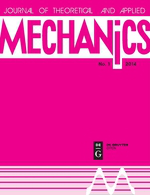
Journal of Theoretical and Applied Mechanics-Bulgaria
Advancing the Frontiers of MechanicsThe Journal of Theoretical and Applied Mechanics-Bulgaria, with the ISSN 0861-6663 and E-ISSN 1314-8710, is a pivotal publication in the field of mechanics, published by the esteemed BULGARIAN ACAD SCIENCES, INST MECHANICS. Based in Germany, this journal serves as a forum for researchers and practitioners to disseminate groundbreaking theories and applications in Computational Mechanics, Mechanical Engineering, and Modeling and Simulation. As of 2023, it is classified in the Q4 quartile for these categories, reflecting its emergence in the academic landscape, though it has room for growth in visibility and impact. The journal encompasses an ambitious scope aimed at fostering innovation and collaboration among academics, making it an invaluable resource for students and professionals seeking to stay abreast of emerging trends and methodologies in mechanics. Despite its current rank and percentile indicators in Scopus, the journal is committed to enhancing its reach and impact within the community through future editions converging from 2016 to 2024. With no open access options currently available, it emphasizes the importance of institutional subscriptions and academic partnerships to maintain its quality publication standards.
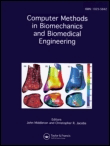
COMPUTER METHODS IN BIOMECHANICS AND BIOMEDICAL ENGINEERING
Elevating Biomedical Engineering with Advanced Computational ResearchCOMPUTER METHODS IN BIOMECHANICS AND BIOMEDICAL ENGINEERING, published by TAYLOR & FRANCIS LTD, is a leading journal dedicated to the interdisciplinary field of biomechanics and biomedical engineering. With an ISSN of 1025-5842 and an E-ISSN of 1476-8259, this journal has been a significant resource since its inception in 1997 and will continue to publish cutting-edge research until 2024. The journal holds a respectable position in the academic community, categorized in Q3 of multiple domains including Bioengineering, Biomedical Engineering, and Human-Computer Interaction, reflecting its relevance across diverse fields. Although the journal does not offer open access, it provides valuable insights and methodologies essential for researchers, professionals, and students engaged in advancing computational techniques and their application in medicine and engineering. With Scopus rankings highlighting its growing influence, particularly in the Biomedical Engineering and Human-Computer Interaction sectors, this journal plays a crucial role in fostering innovation and enhancing the understanding of biomechanical systems through computational methods.

Advances in Aerodynamics
Innovating Solutions in Aerospace Engineering.Advances in Aerodynamics is a premier scholarly journal published by SPRINGERNATURE, dedicated to the innovative fields of Aerospace Engineering, Civil and Structural Engineering, Mechanical Engineering, and various aspects of Modeling and Simulation. Since its inception in 2019, this open-access journal has rapidly gained recognition, achieving a commendable Q1 ranking in several engineering categories as of 2023. With its compelling focus on pioneering research and advancements in aerodynamics, it serves as an essential platform for original research articles, reviews, and technical notes that address both theoretical frameworks and real-world applications in sustainable engineering practices. With an impact factor fostering its prominence and visibility in the academic community, the journal provides accessible content that fosters knowledge dissemination among researchers, industry professionals, and students alike. Situated in Singapore and with a commitment to rigorously peer-reviewed research, Advances in Aerodynamics is positioned to play a pivotal role in shaping the future of aerodynamics and its applications across various engineering disciplines.